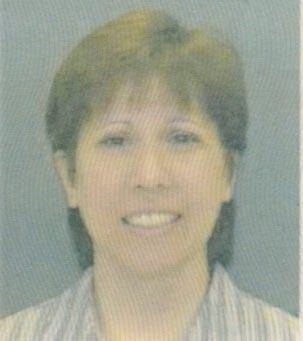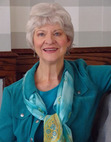Heidi M. Thomas's Blog, page 26
March 21, 2011
Jane Kirkpatrick: Character's Voices
 Historical Author Jane Kirkpatrick has a new novel release, The Daughter's Walk, based on Clara Estby who, with her mother, walked 3,500 miles from Spokane, WA to New York City to promote a new shorter skirt fashion, earn $10,000, and save the family farm. This is a fascinating, entertaining book that explores what happened to Clara after their return, when she was shunned by her family. It is a story of transformation, from the beginning, when Clara pessimistically fights the journey and her mother plays the part of the "eternal optimist." By the end, they've switched roles in their "grand adventure."
Historical Author Jane Kirkpatrick has a new novel release, The Daughter's Walk, based on Clara Estby who, with her mother, walked 3,500 miles from Spokane, WA to New York City to promote a new shorter skirt fashion, earn $10,000, and save the family farm. This is a fascinating, entertaining book that explores what happened to Clara after their return, when she was shunned by her family. It is a story of transformation, from the beginning, when Clara pessimistically fights the journey and her mother plays the part of the "eternal optimist." By the end, they've switched roles in their "grand adventure."
I asked Jane to talk about how she discovers and develops her character's voices and why she chose to write this book in the first person point of view.
It's interesting you should comment, Heidi, on the voices of the characters in The Daughter's Walk. The original version was written in third person through the eyes of Clara and alternating with her mother Helga. Then in part two, I had Clara be the narrator as first person and finally, in part three, I returned to Clara and her mother, alternating in third person. I thought it worked.
But my editor — whose opinion I greatly trust — said to me, "Whose story is this? Clara or Helga's" and once I asked myself that question I realized I wanted to tell Clara's story rather than her mother's. The nonfiction book written by Linda L. Hunt, Bold Spirit, Helga Estby's Forgotten Walk Across Victorian America told the story mostly through and about Helga and the social events that affected their lives, but mostly Helga's. Readers of that book SO loved Helga that Norwegian chapters of Daughters of Norway named their chapters for her. She was practically a saint! In my effort to be faithful to Helga's story I had really short-changed Clara's and it was her story that inspired me to write the novel in the first place.
So back to the drawing board as they say! What I found is that Clara needed to be heard and it was much easier to tell the entire story through her than I'd thought. I still think I honored Helga but I was more interested in the journey Clara had to take as a result of the walk and the consequences of it. I could ask myself what Clara might be thinking when her mother did this or that and explore Clara's motivation as I began to see the world through her eyes.
 How do I create a distinctive voice for each of my characters? Good question! Their history creates some of the design, were they German American, Norwegian, Native American, Swiss and did they learn English as a second language as that affects the sentence structure when they speak. I try to find some piece of dialogue or a bit of behavior that feels natural and becomes associated with each character so eventually I might not have to use "she said" because we know who is speaking by the word choice or how she "blinked her eyes." We might also know some internal state because she says or does that bit "when she's nervous" or when she's about to go ballistic.
How do I create a distinctive voice for each of my characters? Good question! Their history creates some of the design, were they German American, Norwegian, Native American, Swiss and did they learn English as a second language as that affects the sentence structure when they speak. I try to find some piece of dialogue or a bit of behavior that feels natural and becomes associated with each character so eventually I might not have to use "she said" because we know who is speaking by the word choice or how she "blinked her eyes." We might also know some internal state because she says or does that bit "when she's nervous" or when she's about to go ballistic.
Each character also has to change over time and how that progresses will also shape that character's voice. About half way through a novel, I feel like the character starts to tell me things about them that I didn't know or hadn't uncovered in my research. It usually requires that I go back and rework earlier sections but it's also true that a reader likes to have that character unfold over time. As authors we don't have to show readers everything about that character in the beginning. We do need though to have some distinctive characteristics so the reader can visualize early on who this person is and whether they might want to spend an entire book with them . If it's a first person POV, it also has to be a character whose way of seeing the world offers sustained interest over the length of the book.
For Clara, her interest in her hair (she carried that curling iron all the way across the country!) seemed a natural way to help shape her voice. It became a way to show her internal state, how she dealt with disappointment. I also found that her hair was a way of engaging with her women friends and that interaction then expanded the character of each of those women. I hope I did all of that in a believable way.
As for which voice — first person or third — is easier to write in…they both have their challenges and their delights. I've had a number of men tell me they like reading my books because the men are real, not always perfect but people they can relate to. I've never written a book with a first person male protagonist. Might be interesting to try but so far I just love finding stories of 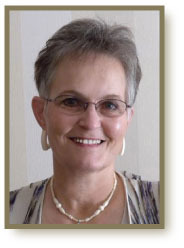 fascinating historical women and then entering their psyche and their lives hoping to glean what is universal about our worlds despite the generations that separate us. It's one of the joys of writing.
fascinating historical women and then entering their psyche and their lives hoping to glean what is universal about our worlds despite the generations that separate us. It's one of the joys of writing.
The Daughter's Walk will be available April 5 at booksellers and on Amazon. Jane Kirkpatrick has written sixteen historical novels based on the lives of actual women, and three non-fiction books. Her books have won numerous awards, including Best Books by Library Journal at the Women Writing the West WILLA award.








March 17, 2011
Where do Characters Come From?
 My guest today is Donis Casey, author of five Alafair Tucker mysteries. (I bought the first one, The Old Buzzard Had it Coming, strictly on the title!) I've asked her to elaborate on how she "discovered" and developed her main character.
My guest today is Donis Casey, author of five Alafair Tucker mysteries. (I bought the first one, The Old Buzzard Had it Coming, strictly on the title!) I've asked her to elaborate on how she "discovered" and developed her main character.
Alafair Tucker
By Donis Casey
Hercule Poirot, Harriet Vane, Annie Darling, V.I. Warshawski, Stephanie Plum, Alafair Tucker. Where did they come from? What sort of mind does it take to create a character that seems to live and breathe? Yes, I dare to list the name of Alafair, my turn-of-the-Twentieth-Century sleuthing mother of ten children, alongside these immortals, because I'm confident that even though my books may not live forever in the annals of English-language literary tradition like Agatha Christie's, Alafair sprang forth in the same way as Miss Marple did.
It was something of a miracle.
If you are an author, you may bring your characters into the world, but in a odd way, how they turn out really doesn't have anything to do with you.
In 1999, after I closed my business and discovered I now had time to do research, I decided to write a family genealogy for my siblings as a Christmas present. In the course of the research, I ran across stories and anecdotes about ancestors, which led me to remember stories my grandparents and parents had told me about their parents and grandparents, and life on the farm. I began questioning my mother, and then to write down my own memories. When I shared my stories with my husband, he began to reminisce about his (extremely colorful) Oklahoma pioneering family. This led me to begin questioning his siblings. At the end of the process, I had a book length genealogy packed with stories from the French and Indian wars, the Revolution, the Civil War, World Wars I and II, ambushes, murders, adoptions, divorces and adultery — settlers and Indians, massacres, poisonings, axings, shootings, drownings, and smashing people in the head with beer bottles.
I plumbed my own memory as well as interviewed many relatives. Many of the details of farm life come from my mother, such as using kerosene-soaked corn cobs to start a fire. Many of the incidents related actually happened, both in my family and my husband's (the less savory ones, he points out).
I began writing The Old Buzzard Had It Coming, the first book about Alafair's life, early in 2000. The fifth entry in the series, Crying Blood, was issued by Poisoned Pen Press just last month.
The character of Alafair was cobbled from bits and pieces of all the beloved women in my family who came before me. Alafair was the name of my father's maternal grandmother, Alafair Morgan. Tucker was the family name of my father's paternal grandmother, Selinda Tucker. Here is a photograph of Great-Grandma Alafair Morgan, taken when she was about twenty-five years older than the Alafair I write about. You can see what having that many children really does to you. But like the character, the real Alafair was the pillar of her house and the queen of her domain, and everyone loved her.
My Alafair is funny, reflective, wise to ways of the world and the ways of kids, and a bit sad because of the losses in her life, like my own mother. She's the center of her family, loving and giving to a fault, adored by her children, and a legendary cook, like my mother-in-law. With the best of motives, she's all up in your business and can drive you crazy, too, like a relative of mine who shall remain nameless, lest she read this (though she won't recognize herself. They never do.)
Alafair is also me, if I were totally different than I am. Through her, I get to live the life I never lived and never will. I imbue her with all the virtues and strengths I do not have. She knows what she knows and takes action. Then once she has, she doesn't second-guess herself. I agonize over every decision and sometimes take no action at all. She's kind and tolerant of human weakness. Me: not so much. She takes care of everyone. Me: I know it's suppertime. Order a pizza. She's patient. Me: get out of my face.
 I may have created Alafair out of pieces of all these women, but she's much more than the sum of her parts. The great British mystery novelist Graham Greene said, "The moment comes when a character says or does something that you hadn't thought of. At that moment, he's alive and you leave it to him." I first put Alafair on the page, but then she stood up and walked away, and I just follow where she leads. Anyone who has ever written fiction knows what I mean. Your characters are not really your own.
I may have created Alafair out of pieces of all these women, but she's much more than the sum of her parts. The great British mystery novelist Graham Greene said, "The moment comes when a character says or does something that you hadn't thought of. At that moment, he's alive and you leave it to him." I first put Alafair on the page, but then she stood up and walked away, and I just follow where she leads. Anyone who has ever written fiction knows what I mean. Your characters are not really your own.
_______________________
Donis Casey is the author of five Alafair Tucker Mysteries,The Old Buzzard Had It Coming, Hornswoggled, The Drop Edge of Yonder, The Sky Took Him, and the newly released Crying Blood. Donis lives in Tempe, AZ, with her husband, poet Donald Koozer.
Read the first chapter of each novel on her website, www.doniscasey.com, She blogs about writing at www.typem4murder.blogspot.com, and about food in mysteries at www.fatalfoodies.blogspot.com.








March 14, 2011
Nature Nurtures
Sometimes when I get "stuck" in my writing projects or just have "cabin fever," I go to one of my favorite spots, Bayview State Park in Northwest Washington. I find peace and inspiration there. I was looking for the elusive sun, and it gave me a fleeting, teasing glimpse.
I was looking for the elusive sun, and it gave me a fleeting, teasing glimpse. The light reflecting on the clouds and shimmering on the beach.
The light reflecting on the clouds and shimmering on the beach. Nature creates its own poetry.
Nature creates its own poetry. Nature nurtures me.
Nature nurtures me.








March 10, 2011
Is Stress Keeping You from Writing that Best Seller?
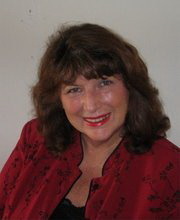 My guest blogger today is Kathy Stemke, freelance writer, educator, and author of Moving Through All Seven Days.
My guest blogger today is Kathy Stemke, freelance writer, educator, and author of Moving Through All Seven Days.
by Kathy Stemke
If you're like me, my first instincts when stress attacks are to eat, worry, complain, or completely withdraw. This reaction just paralyzes me, makes me unhappy and prevents me from writing. So what's a writer to do?
I offer you a list of stress breakers that may just get you in the mood to write.
Ask, "In the ETERNAL scheme of things, will this problem be of ANY importance?" Answer, "No, probably not."
Pray.
Make someone's day.
Choose your attitude.
Play and Be There
Get out of the house and spend time with some friends, basically expand your world a little bit so your world is not so small.
Count to a certain number.
Meditate.
Splash water on your face.
Take a bubble baths with low lights and read a good book.
Put a washcloth in hot water and add fragrant oil. Wring the cloth and lay it on your face.
Go for a walk.
Sing.
Squeeze a stress ball.
Punch or throw pillows at the wall.
Think of funny stuff.
Write about your feelings. Journal, journal, and journal some more.
Listen to relaxing music.
Draw a story.
Use progressive muscle relaxation (or PMR). It is a technique for reducing anxiety by alternately tensing and relaxing the muscles. It was developed by American physician Edmund Jacobson in the early 1920s. Jacobson argued that since muscle tension accompanies anxiety, one can reduce anxiety by learning how to relax the muscular tension. PMR entails a physical and mental component.
The physical component involves the tensing and relaxing of muscle groups over the legs, abdomen, chest, arms and face. With the eyes closed and in a sequential pattern, a tension in a given muscle group is purposefully done for approximately 10 seconds and then released for 20 seconds before continuing with the next muscle group.
The mental component focuses on the difference between the feelings of the tension and relaxation. Because the eyes are closed, one is forced to concentrate on the sensation of tension and relaxation. Because of the feelings of warmth and heaviness are felt in the relaxed muscle after it is tensed, a mental relaxation is felt as a result. Jacobson also found that the relaxation procedure is effective against ulcers, insomnia, and hypertension.
If all else fails, keep a supply of small size chocolates handy. These really do help you de-stress.
Now write that next best seller and send me a signed copy, please. Can you add to this list?
Author/Educator, Kathy Stemke, has a B.S. from Southern Connecticut State University and Covenant Life Seminary, and graduate coursework from Columbia University. As a freelance writer Kathy has published several articles and is a contributing editor for The National Writing for Children's Center. She is also part of the team at DKV Writing 4U, a full service writing company.
 Moving Through All Seven Days
, her first e-book, is now available on Lulu, while Trouble on Earth Day and Sh, Sh, Sh will the Baby Sleep are slated to come out in 2011.
Moving Through All Seven Days
, her first e-book, is now available on Lulu, while Trouble on Earth Day and Sh, Sh, Sh will the Baby Sleep are slated to come out in 2011.
Kathy Stemke's websites and blogs:
Educationtipster blog- http://educationtipster.blogspot.com Sign up for her free monthly newsletter, Movement and Rhythm, here.
Moving Through all Seven Days ebook purchase here: http://www.lulu.com/content/e-book/moving-through-all-seven-days/7386965#
Articles: http://www.helium.com/users/406242.html
http://www.associatedcontent.com/user/237923/Kathy_stemke_dancekam.html
Writing Services:
http://dkvwriting4u.com
If you'd like to read another author on tour tomorrow, check out Dallas Woodburn featuring Karen Cioffi, author, ghostwriter, freelance writer, blogger and on the team of DKV Writing 4 U
And don't forget to scroll down to my blog from yesterday to check out the Blog Hop. Thanks for visiting!








Join us in Blog Hop Day!
Welcome to the Blog Hop. Leave a comment on my blog and you'll be entered in a drawing for a copy of one of my books. Then pick one or more blogs from the following list and visit for more chances to win prizes! Sponsored by BOLD e-zine.

PARTICIPATING BLOGS
1. Bold E-zine
(1) – $10.00 Cash Paypal
(10) – $20.00 Advertising Certificates redeemable with BOLD – Winner may use themselves or transfer the advertising certificate to a friend.)
2. Still Blonde After All These Years
$75.00 Lending Luxury.com Gift Certificate
3. Bree, Home to Blogmania
$15.00 Best Buy Gift Card – $10.00 Cold Stone Creamy GC
4. Di Doodlings
$10.00 PayPal – $10.00 iTunes – $10.00 Amazon
5. Momma Told Me
$20.00 Amazon Gift Card – $10.00 PayPal Cash – $10.00 WalMart GC – $10.00 Target GC
6. The Socialite's Closet
$20.00 Target Gift Card – $25.00 Apothica GC
7. Books R Us
$10.00 PayPal Cash – $25.00 gift card to restaurant.com – $10.00 gift card to Amazon.com
8. Heidiwriter
Gift Certificate – winner's choice – Cowgirl Dreams, or Follow the Dream
9. The Adventures of My Family of 8
$10.00 Gift Card – Starbucks
10. Turning The Clock Back
$20.00 Ecomom gift code - $25.00 Isle of Eden Code – $10.00 Starbucks Code
11. Maxwell's Mommy
March 5, 2011
E-Book Week
Read an E-Book Week is March 6-12, 2011.
 E-BOOKS TURN 40! That's right – it's been forty years since Michael S. Hart created the first "e-book". For a more in-depth look at the history of e-books please see this web page.
E-BOOKS TURN 40! That's right – it's been forty years since Michael S. Hart created the first "e-book". For a more in-depth look at the history of e-books please see this web page.
Also check out EPIC, Electronically Published Internet Coalition, established in 1998 to provide a strong voice for electronic publishing. Once an authors' organization, EPICTM has expanded to include hundreds of professionals from all facets of the electronic publishing industry: authors, publishers, editors, artists, and others. Our members work together in a unique collaboration between authors and publishers to further the industry.
My first novel, Cowgirl Dreams, won an EPIC award. Both Cowgirl Dreams and Follow the Dream are available as e-books at Treble Heart Books and Follow the Dreams is available on Kindle.
How many of you have an e-reader? How many of you have published an e-book? Do you believe e-books are the "wave of the future?"








March 1, 2011
How a Horse Taught Her about Fear
This is a wonderful post from the e-zine Vibrant Nation, written by Lisa Arie, the founder of Vista Caballo's exclusive Innovation Ranch set on 160 acres in the Great Sage Plains of Colorado. Lisa shares the story of how she and her horse first found each other – and how their relationship helped her reconnect with herself, and with life.
 Is there life after fear?
Is there life after fear?
They say that whatever you are most afraid of will continue to show up in your life until you face it.
It's a long process. Most people keep fighting or ignoring fear until one day, the big kahuna of fear shows up. That's when you have to decide once and for all if you are going to step up or step off. That's how my life as I know it now all began…
…I gave up my story and set out to find out who I truly was. And I did it with a horse as my guide…
Read more at Vibrant Nation.








February 22, 2011
Why Do You Need an Editor?
Nabokov said, "My pencils outlast my erasers."
Writing well means trial and error and learning to master the craft. And that's an on-going journey. I keep learning new things every year. You're never "there." You're never perfect. And sometimes I think the more I learn, the less I know.
I once read of a famous writer of the past who would simply scribble out his manuscripts on whatever paper surface he might have at hand, give the pile to his editor at the publishing house, and that person made everything come together for lasting, classic fiction works.
That doesn't happen anymore. Or if it does, it's rare. As you probably know, publishing houses are now big conglomerates, with the "bean counters" more in charge than the "pencil pushers." And the editors at these houses are usually underpaid and overworked. I had a young college-age friend who interned at a New York publisher one summer in recent years. She and other interns were in charge of wading through the slush piles. The job was daunting. She (and the interns—mostly volunteer) sent out the rejection form letters. She said there was even a room filled with agented manuscripts, some that had been there as long as a year.
It's a discouraging picture. And I'm not telling you this to discourage you, but rather to EN-courage you. What this means is that these interns/editors—or whoever might read your manuscript—are looking for any reason to reject it, just to get through that pile faster. You have to be able to overcome those reasons.
So if they aren't totally engrossed by your first line, first paragraph, or first page, chances are they won't read any further. If they see typos, spelling errors, bad grammar—chuck it. Strange-looking fonts or lavender-colored paper—it's out (they read so many, please spare their failing eyesight!) Formatting errors (single instead of double-spaced), no headers, chapters that begin at the top of the page instead of 1/3 down. Seemingly minor things, but…
This is where hiring an independent editor can help. And this is espec ially true if you are planning to self-publish. I don't know about you, but after I've worked on a manuscript for weeks, months, even years, I become so close to the work that I cannot look at it objectively anymore. You probably know too, that your eye will see a misspelled word or a typo and your brain registers the word that it's supposed to be.
ially true if you are planning to self-publish. I don't know about you, but after I've worked on a manuscript for weeks, months, even years, I become so close to the work that I cannot look at it objectively anymore. You probably know too, that your eye will see a misspelled word or a typo and your brain registers the word that it's supposed to be.
From the Associated Press, a reminder to always check this word if editing "public" documents:
GRAND HAVEN, Mich. – Ottawa County will pay about $40,000 to correct an embarrassing typo on its Nov. 7 election ballot: The "L" was left out of "public."
A total of 170,000 ballots will have to be reprinted. The mistake appeared in the text of a proposed amendment to the state constitution that would ban some types of affirmative action.
The word "public" was misspelled one of the six times it appears, county Clerk Daniel C. Krueger said Tuesday. Five or six people in his office had proofread the ballot, but it was an election clerk who found the mistake early last week.
"It's just one of those words," Krueger said. "Even after we told people it was in there, they still read over it."
In the Seattle Times, a story about a new ramp at the ferry terminal explained that it was operated by a "system of wenches."
And a headline on Google news: "Don Imus says he's battling stage two prostrate cancer."
So another pair of eyes can be most helpful. if you want to learn and grow and hopefully be published, you really want someone who is going to tell you the things you need to work on, to make your work stronger, to stand out.
The independent editor will be your friend as a writer – in the way that we all have one friend who tells us things we don't want to hear and calls us on it when we're not making sense. You know, the annoying friend. Your editor.
© Heidi M. Thomas








February 15, 2011
Interview with Barbara Warren, My Wonderful Editor
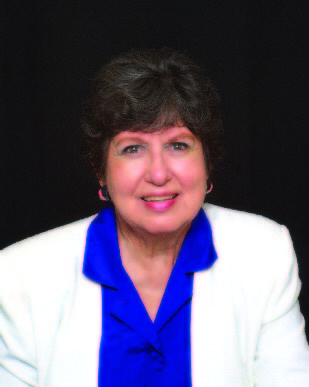 Barbara Warren, author and owner of Blue Mountain Editorial Service,
lives on a farm in the beautiful Ozarks
in Missouri with her husband Charles, a herd of cattle and an office cat named Rosicat, who was abandoned at their church when she was just a kitten. Rosicat manages the office. Charles and Barbara do the work.
She is a writer, editor, and Sunday school teacher. Her hobbies are reading and raising flowers. Barbara was my editor on both of my novels, Cowgirl Dreams and Follow the Dream, published by Treble Heart Books.
Barbara Warren, author and owner of Blue Mountain Editorial Service,
lives on a farm in the beautiful Ozarks
in Missouri with her husband Charles, a herd of cattle and an office cat named Rosicat, who was abandoned at their church when she was just a kitten. Rosicat manages the office. Charles and Barbara do the work.
She is a writer, editor, and Sunday school teacher. Her hobbies are reading and raising flowers. Barbara was my editor on both of my novels, Cowgirl Dreams and Follow the Dream, published by Treble Heart Books.
Can you expand on your editing background–how did you get into it? Did you take classes?
No, I didn't take classes. I belonged to a writer's group and we critiqued each other's work. People kept urging me to become an editor, and after a while I took them seriously. I do read a lot of books on writing and have an extensive library of books about writing and editing. I keep studying, wanting to grow so I can do a better job for the writers whose books I edit.
How long have you been editing?
I've been editing for twenty years. It's a job I love and I hope I can keep doing it for many more years.
Do you do most of your work for Treble Heart Books or do you also do freelance editing?
I have my own business, Blue Mountain Editorial Service and am listed on several on-line sites. My clients are both published and non-published, and many of them come through word of mouth. I also get clients from Treble Heart and Lee Emory is great to work with. I've met many very good writers through her.
What is your advice for a writer who would like to become an editor?
Study books on writing and editing. Gain experience by editing for fellow writers. Study what is selling, and read books in all genres, not just what you like. When you think you are ready, make sure you have a website. Post your company online in places like Preditors and Editors. List it in books like Sally Stuart's Christian Market Guide (both are free). Have brochures printed and ask writer friends to give you an endorsement. Hand out brochures and cards every chance you get. Attend writers' conferences and ask permission to display your brochure. Establish business ethics and live by them. Always do more than you are expected to do. Help your clients any way you can, and always be honest. Don't tell a client how good he or she is, point out what is good, but also point out the faults and tell the writer how to make the book better.
What are the major mistakes you look for when editing a manuscript?
One big mistake is to tell the story instead of showing it through dialogue and action. It's the difference between someone telling you what happened yesterday and you being present when it actually happened.
Choose one viewpoint character per scene and show what happens in that scene in that character's point of view. Let the reader see what that character sees, hears what he hears. Instead of saying Sally was scared. Show Sally frozen in place, every nerve tuned, listening for a footfall. See the difference?
Let your characters talk natural, the way you and the people you know talk. Don't have a 'good old boy' talk like a college professor. Keep it casual, avoid formal language.
Know your characters. Know how each one would act in a stressful situation. Some people panic. Others withdraw. What will the character you have invented do?
What would you say are the "good" qualities of an acceptable manuscript?
Characters who seem real with believable problems. People read stories to learn about people. Think of your favorite books. Do you remember the plots? I'm betting you remember the characters.
Active writing as opposed to passive. Don't write "tables were being set up." Show who is setting up the tables. And avoid writing about 'the man.' Name him. If you read in the paper that a man jumped off the bridge you might be interested. If you read that John Walker jumped off the First Street Bridge, you're more interested. And if you read that John Walker, owner of the local Sonic and the father of four children jumped off the First Street Bridge, then your emotions are engaged.
Always remember your reader. Will the reader understand what you are saying? Will the reader be offended? Are you preaching to the reader or trying to convert him to your point of view? Treat your readers with respect.
At what point should a writer seek an editor?
When you have written, rewritten, and feel you can't do any more to the manuscript, then you are ready to have someone else look at it. But first do all you can to make it a good manuscript. No point in paying someone else to do what you can do yourself.
What can an independent editor do for an author in preparing her manuscript for submission to a publisher?
A good editor can point out flaws in the story, check for flow, awkward sentences, make sure there are no loose ends, and that it engages the emotions of the reader. An editor can also show proper formatting, help with a synopsis and query letter, and work with the writer to make the manuscript and proposal the best the two of them can make it. A good editor is not in it just for the money. He or she will do everything possible to help the writer polish that manuscript until it shines.
Barbara is also an author. The Gathering Storm, a mystery and her first novel, was released by Jireh Publishers and is available at Amazon and on her web site http://www.barbarawarrenbluemountainedit.com Her agent is Terry Burns with Hartline Literary Agency.








February 10, 2011
Rewriting a Folktale – Walking Through Walls
When a writer's muse seems to be on vacation, she may be at a loss for story ideas. While there are a number of sites and tools online to help get the creative juices flowing, one tool that writers might overlook is studying folktales.
Reading folktales is a great way to spin a new yarn, especially for children's writing. I recently did a review of a children's picture book published by Sylvan Dell that was based on an American Indian folktale. This shows they are publishable.
Folktales, also known as tall tales, and folklore, are stories specific to a country or region. They are usually short stories dealing with everyday life that come from oral tradition that is passed from generation to generation. Most often these tales involve animals, heavenly objects, and other non-human entities that possess human characteristics.
There is Mexican folklore, Irish folklore, Chinese folklore, as well as folklore from many other countries that have tales unique to their area. There is also American folklore that encompasses stories from each of the 50 states. There is a huge supply of stories to spin and weave.
In addition to reviewing a couple of published children's books that were based on folktales, I wrote a children's fantasy story based on an ancient Chinese tale.
Interestingly, prior to receiving an outline of the tale from a Chinese nonfiction writer I knew from one of my writing groups, I never thought of rewriting folktales. But, once given the outline, I loved the story and the message it presented. The outline itself was very rough and written with an adult as the main character (MC), which is often the case with very old folktales.
After reading the story I knew the MC would need to become a child. I think every children's writer is aware that children want to read about children, not adults. And, the MC needs to be a couple of years older than the target audience the author is writing for.
Based on this, I decided to make my MC a 12-year-old boy. And, since I liked the ancient Chinese flavor of the story, I kept it and made the story take place in the 16th century China. After this was set, I needed to come up with a title and the MC's name.
When choosing a title for your book, it's important to keep it in line with the story and make it something that will be marketable to the age group you're targeting. I chose Walking Through Walls, and it is scheduled to be available March 2011.

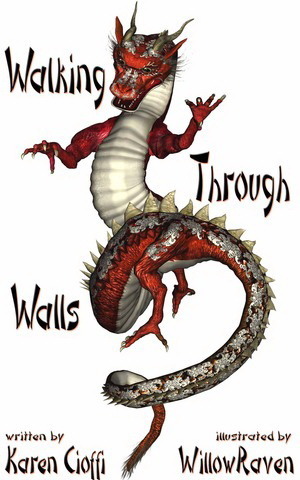
As far as the character's name, you will need to base it on the time period and geographic location of the story, unless the character is out of his element. Since my story was to take place in China, I used a Chinese name, Wang.
To keep the flavor of your story consistent, you will also need to give it a feeling of authenticity. This will involve some research. How did the people dress during the time of your story? What names were used? What did they eat? What type of work or schooling was available? What locations might you mention? What type of crops and vegetation would be present? What types of homes did they live in? There are many aspects of the story that you will want to make as authentic as possible. And, it does matter, even in fiction stories; it will add richness to your story.
The next time you're in the library, ask the librarian to show you a few folktales. Then imagine how you might rewrite one or more of them for today's children's book market.
~~~~~~~~~~~~~~~~~
Karen Cioffi is an author, ghostwriter, and freelance writer. For writing and marketing information visit (http://karencioffi.com) and sign up for her free newsletter: A Writer's World. You'll get 2 free e-books on writing and marketing in the process, and two more free e-books just for stopping by.
You can follow Karen at:
http://www.linkedin.com/in/karencioffiventrice
href="http://twitter.com/KarenCV
http://www.facebook.com/kcioffiventrice










